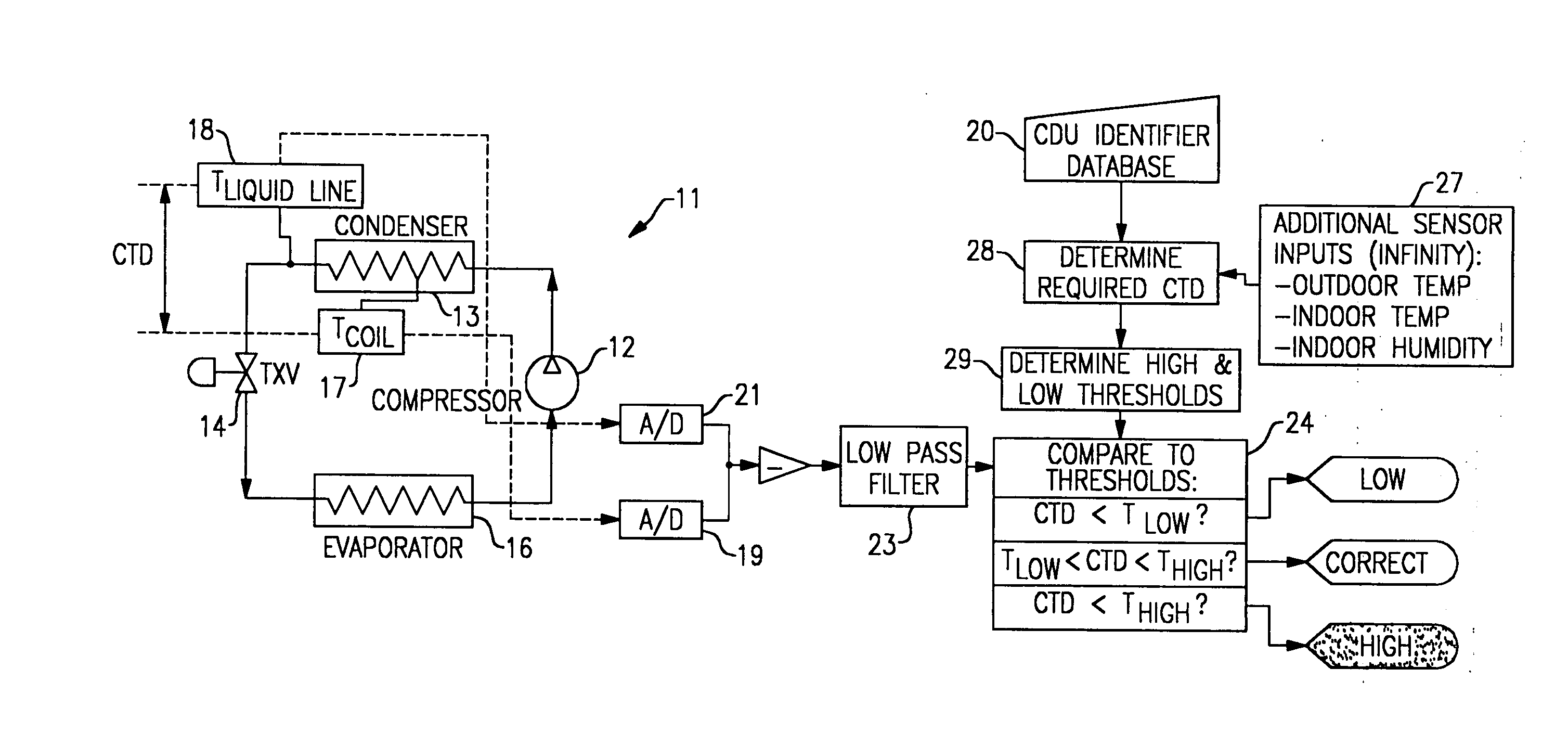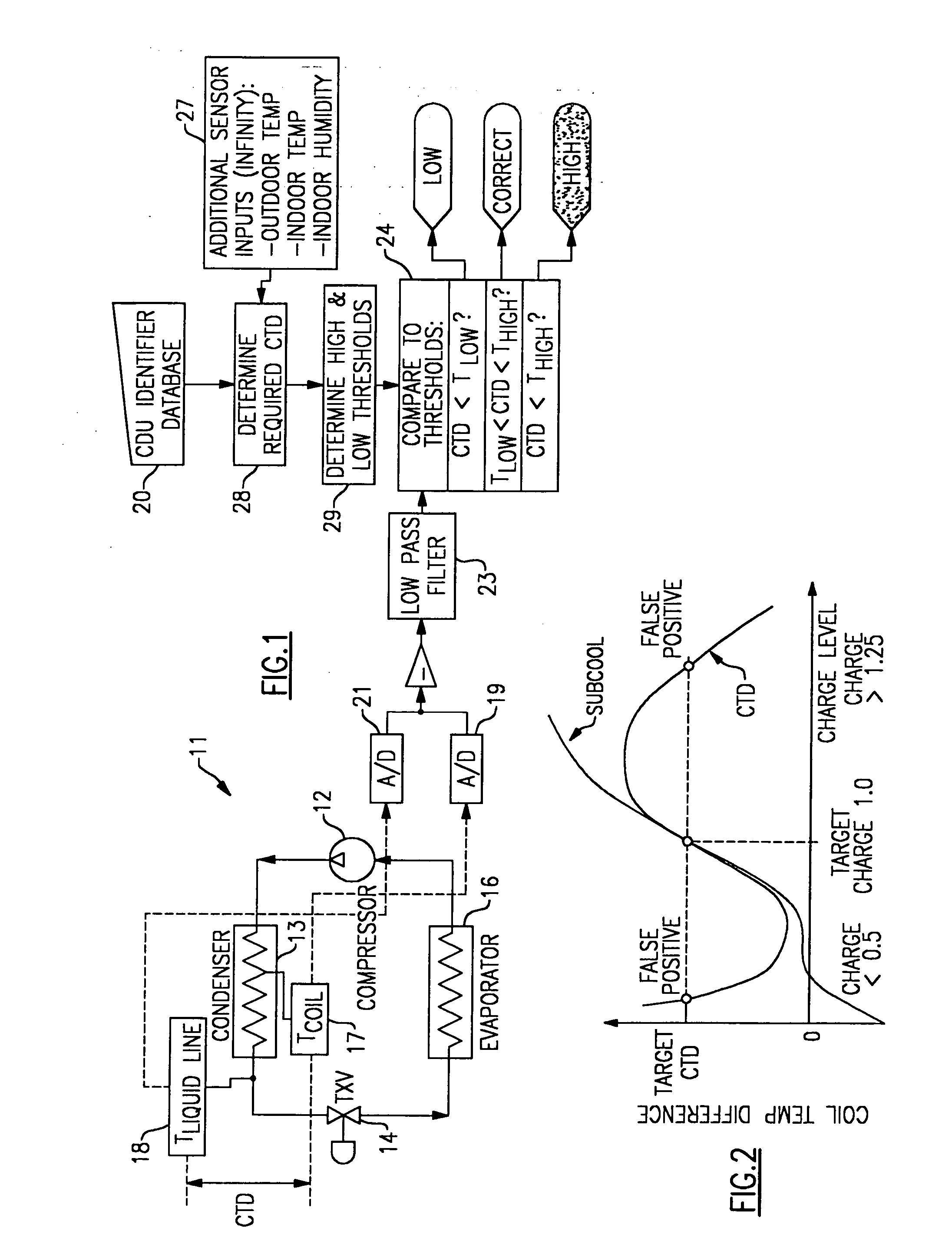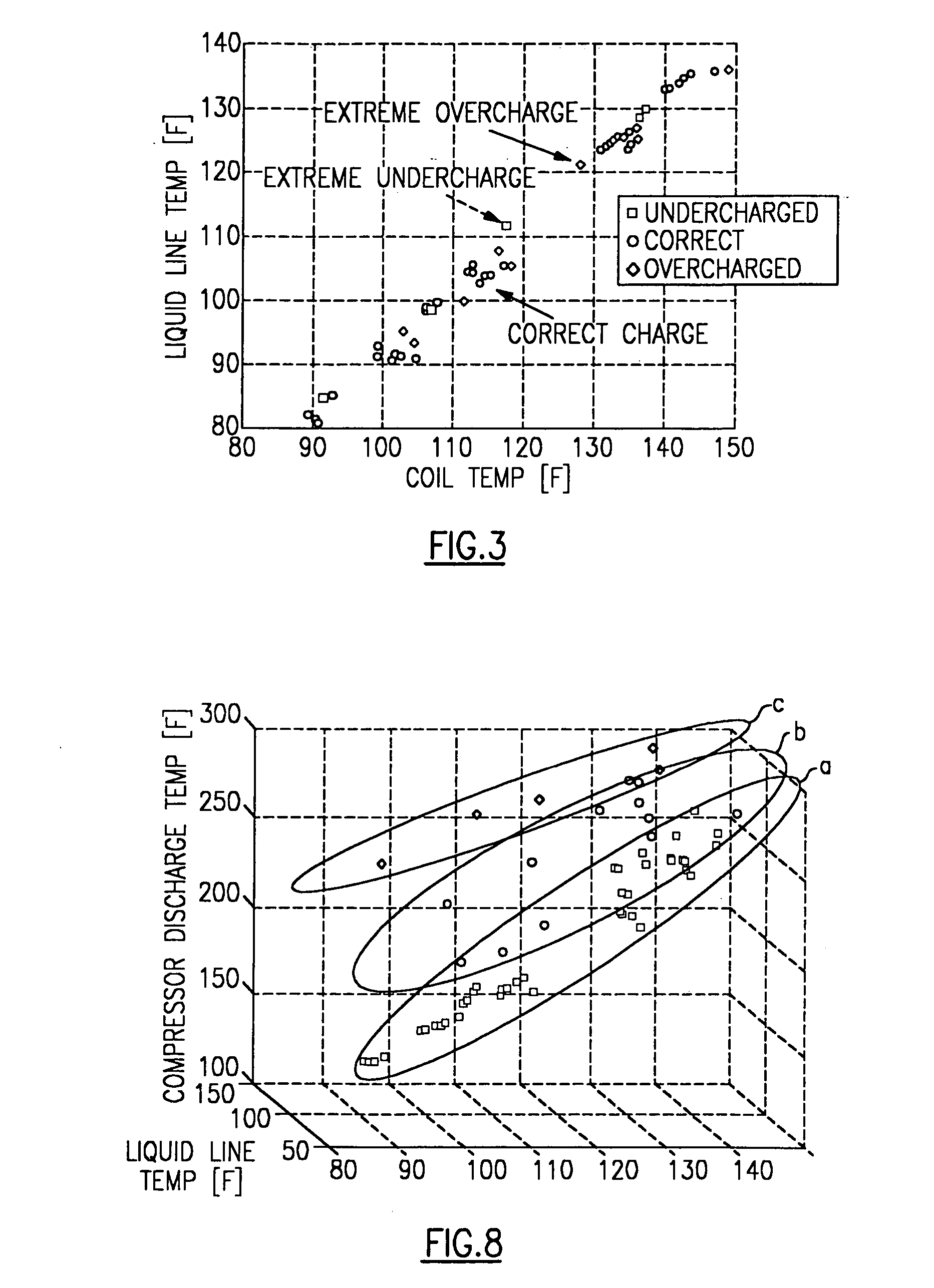Detection of refrigerant charge adequacy based on multiple temperature measurements
a technology of refrigerant charge and temperature measurement, applied in the field of subcritical vapor compression systems, can solve problems such as working sufficiently well, and achieve the effect of good indicator of charge level
- Summary
- Abstract
- Description
- Claims
- Application Information
AI Technical Summary
Benefits of technology
Problems solved by technology
Method used
Image
Examples
Embodiment Construction
[0017] Referring now to FIG. 1, there is shown generally at 11 a vapor compression system that includes a compressor 12 for delivering hot, high pressure refrigerant gas to a condenser 13 where the gas is cooled by another fluid, such as outdoor air, and undergoes a phase change from gas to a liquid. The subcooled liquid is expanded at an expansion device 14 so that its pressure and temperature are significantly reduced. Finally, the refrigerant goes through a second heat exchanger or evaporator 16, where it is heated by another fluid such as indoor air.
[0018] In accordance with the present invention, the CTD method utilizes a coil temperature sensor 17 installed near the middle of the condenser 13 so as to enable the measurement of the refrigerant temperature therein. If the refrigerant charge in the system is near the proper level, the refrigerant of the middle of the condenser 13 is in a saturated state and the temperature sensed by the coil temperature sensor 17 provides a good...
PUM
| Property | Measurement | Unit |
|---|---|---|
| temperature | aaaaa | aaaaa |
| temperatures | aaaaa | aaaaa |
| coil temperature | aaaaa | aaaaa |
Abstract
Description
Claims
Application Information
 Login to View More
Login to View More - R&D
- Intellectual Property
- Life Sciences
- Materials
- Tech Scout
- Unparalleled Data Quality
- Higher Quality Content
- 60% Fewer Hallucinations
Browse by: Latest US Patents, China's latest patents, Technical Efficacy Thesaurus, Application Domain, Technology Topic, Popular Technical Reports.
© 2025 PatSnap. All rights reserved.Legal|Privacy policy|Modern Slavery Act Transparency Statement|Sitemap|About US| Contact US: help@patsnap.com



